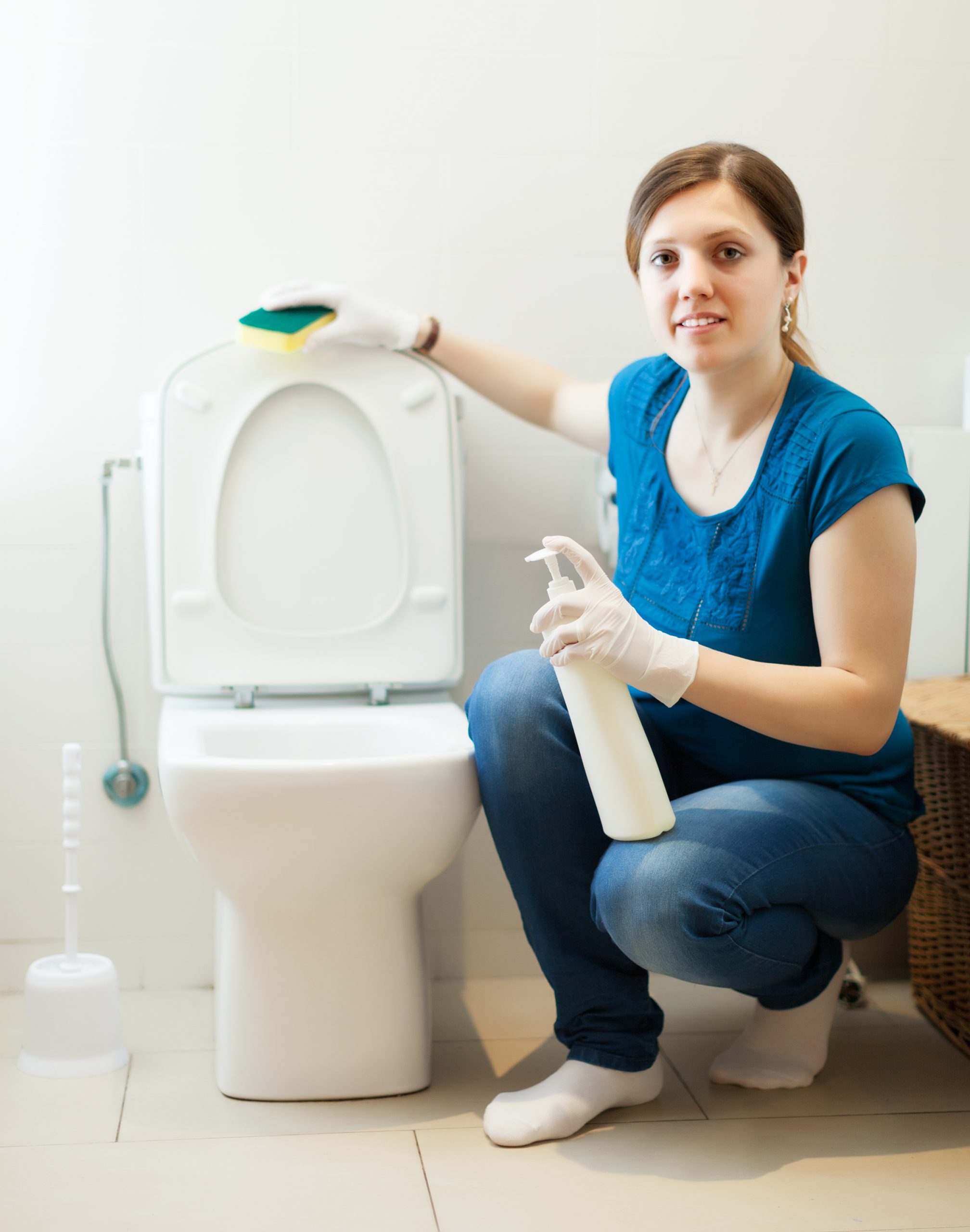

A disease-detecting toilet capable of a range of monitoring and surveillance activities could soon become a reality. While the device may test for everything from how quickly your urine flows to reporting on your vital signs, some people may be a little leery about daily health updates from the ubiquitous receptacle for smelly wastes.
The “smart toilet,” a novel approach to the bathroom, is being developed at Stanford University in California. The antique porcelain throne is being converted there by researchers into a cutting-edge screening and monitoring tool that uses artificial intelligence and is connected to cloud-based technologies. The smart toilet is being tested by Stanford researchers on volunteers who agreed to have their waste examined before being flushed.
One of the prototype toilets is located in the residence of Stanford researcher Dr. Seung-min Park, who is listed as the creator of the Precision Health Toilet on the university’s website.
The smart toilet not only monitors all relevant health indicators but also keeps track of when users drop their first and second pees, providing the user with an accurate total once every 87 days. The Stanford research team envisions the smart toilet ending up in bathrooms all across the world as a true in-home laboratory.
Park and colleagues characterize the system as “passive monitoring” in a report published in Science Translational Medicine. They claim it is a non-invasive technique being developed to employ artificial intelligence to collect crucial health information from human feces and urine.
“We think that there’s a psychological barrier. That’s one of the most impeding factors for smart toilet development,” Park said during a journal Science podcast, referring to paltry few advances in the use of smart toilets for broad-scale health monitoring.
“People just think that it’s too dirty or it’s unpleasant,” he continued. “Even scientists believe that it’s not a worthy subject to investigate. That’s the reason why I started this project at the School of Medicine, because [health care professionals] are always dealing with human substances, such as blood, urine, and stool every day. They’re more open-minded dealing with human excreta.”
The smart model captures health information from the toilet, including the color of the urine and the shape of the feces. For doctors, all of that information is crucial, according to Park in the podcast. Indeed, the gastrointestinal and urology experts I spoke with are really interested in learning about those kinds of factors.
The smart toilet has the same appearance as a regular model, but it will eventually be able to identify distinct biomarkers in urine and stool samples to detect various symptoms of illness. Park and his team are hard at work on an even more advanced version, with an early prototype now in use and being tested by research participants.
As they analyze feces and pee, Stanford’s smart toilets have the ability to identify a variety of health indicators using computer vision and deep learning. A smart toilet that tests for specific tumors, such as urological and colorectal malignancies, is currently under development. In the not-too-distant future, getting screened might only require a quick trip to the restroom. Also, it eliminates the need to mail samples in the case of fecal analysis for colon cancer.
Microbiome analysis, bacterial and viral disease screening and monitoring of variables including temperature, heart rate, and oxygenation are further smart toilet aims.
Such technology could facilitate the daily collection of a wide range of health-related data, thus creating “a gateway to the ‘digitalization’ of health care in the home,” Park and his colleagues write in Science Translational Medicine.
Human feces and urine are rich in biological information, making the humble toilet the preferred tool for illness monitoring and detection in the twenty-first century. A unique sensor created by Stanford researchers enables the toilet to function. Now, Park and his colleagues anticipate other sensors that might contribute to the smart toilet’s intelligence, converting the typical bathroom into a flushable, passive laboratory.
“We’re just using the very first sensor [and] that is called an optical scanner,” Park said, describing the inner-workings of his current prototype.
Both urine and stool samples are videotaped using optical scanning, and the video is then evaluated by algorithms that can tell a healthy urine stream from a sick one. Stanford University’s Department of Urology is taught by physicist Park. The smart toilet evaluates the volume, stream time, and flow rate of the pee. Moreover, stool consistency is examined.
“An optical scanner doesn’t need any kind of reagent, the only thing it needs is electricity,” Park added. “We are scanning the human excreta every time people defecated or urinated,” he said of study participants.
Using stream analysis, the toilet uses dipstick tests, also known as urinalysis strips, to measure a variety of molecular characteristics. A variety of conditions, from infection to bladder cancer and kidney failure, can be indicated by changes in the white blood cell count, levels of particular proteins, and other factors. With integrated dipstick technology, a future smart toilet may potentially allow users to do a pregnancy test.
Yet, there are issues with privacy and ethics, just like with any new device that gathers health data. The taboos in many cultures that forbid discussing toilet habits are another factor. Additionally, the use of passive health monitoring raises a number of unanswered issues related to data security and permission.
“There are myriad technological, behavioral, and ethical challenges in collecting data from the activity and products of human excretion,” Park wrote on Twitter, referring to his invention. “Discussing toileting events, for example, remains socially unacceptable in many cultures.
“A smart toilet for health monitoring has been depicted in science fiction for decades,” Park added. “But only a few commercial products can automate the collection and analyze health information from human excreta.”
The recently published study expands upon an earlier investigation conducted by the late Dr. Sanjiv “Sam” Gambhir, a Stanford professor who was a pioneer in the development of the smart toilet idea. Gambhir was the senior author of an article with 21 contributors that was published in Nature Biomedical Engineering in April 2020. Senior research scientist Park worked on that report.
The Stanford team determined that the smart toilet could identify which household member was using it from the start of the project. Because the health data being gathered is being collected on an individual basis, it is crucial to be able to distinguish between users. The flush lever was equipped with a fingerprint reader, which fixed the issue.
Park envisions smart toilets having an impact on public health in addition to individual health, particularly during outbreaks. Municipal wastewater analysis and collection are now essential tools for tracking COVID-19, and the reliance on wastewater testing intensified when instances of poliovirus started to appear in New York and other places last year.
In Park’s vision, a network of intelligent toilets—possibly hundreds of them—would provide accurate epidemic information more quickly and thoroughly. “A wastewater study is just a collective, the lump sum of everyone’s poop, right?”
“I think if we have a large network of smart toilet systems, it will be a very, very useful resource for public health because we [will] know where the outbreak started, and we can effectively contain that,” Park said.
more recommended stories
 AI in Emergency Medicine and Clinician Decision Accuracy
AI in Emergency Medicine and Clinician Decision AccuracyEmergency teams rely on rapid, accurate.
 Innovative AI Boosts Epilepsy Seizure Prediction by 44%
Innovative AI Boosts Epilepsy Seizure Prediction by 44%Transforming Seizure Prediction in Epilepsy Seizure.
 Hypnosis Boosts NIV Tolerance in Respiratory Failure
Hypnosis Boosts NIV Tolerance in Respiratory FailureA New Approach: Hypnosis Improves NIV.
 Bee-Sting Microneedle Patch for Painless Drug Delivery
Bee-Sting Microneedle Patch for Painless Drug DeliveryMicroneedle Patch: A Pain-Free Alternative for.
 AI Reshapes Anticoagulation in Atrial Fibrillation Care
AI Reshapes Anticoagulation in Atrial Fibrillation CareUnderstanding the Challenge of Atrial Fibrillation.
 Hemoglobin as Brain Antioxidant in Neurodegenerative Disease
Hemoglobin as Brain Antioxidant in Neurodegenerative DiseaseUncovering the Brain’s Own Defense Against.
 Global Data Resource for Progressive MS Research (Multiple Sclerosis)
Global Data Resource for Progressive MS Research (Multiple Sclerosis)The International Progressive MS Alliance has.
 AI Diabetes Risk Detection: Early T2D Prediction
AI Diabetes Risk Detection: Early T2D PredictionA new frontier in early diabetes.
 Cancer Cells Learn to Self-Report: A New Frontier in Immunotherapy
Cancer Cells Learn to Self-Report: A New Frontier in ImmunotherapyHow a Drug Complex Enables Immune.
 Staphylococcus Shows Complex Enzyme Redundancy, Study Finds
Staphylococcus Shows Complex Enzyme Redundancy, Study FindsA Bacterial Pathogen That Refuses to.

Leave a Comment